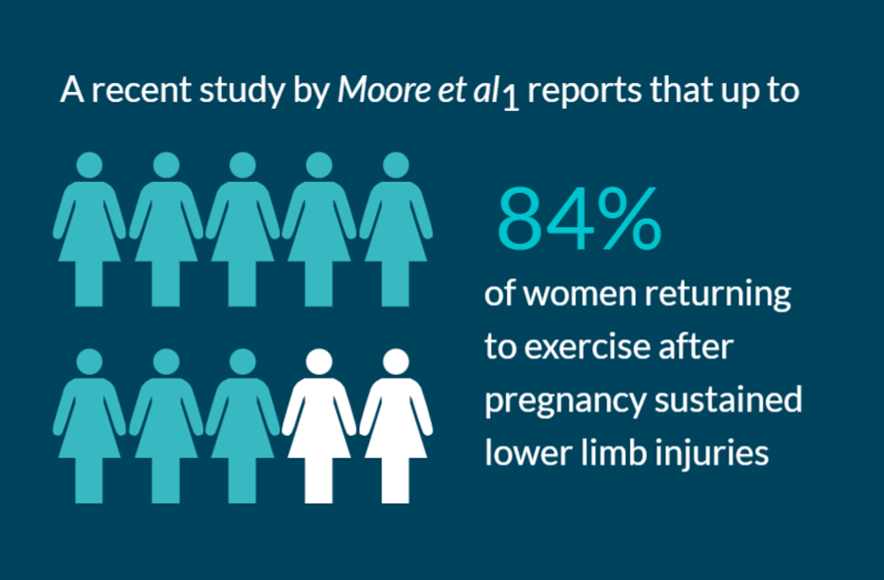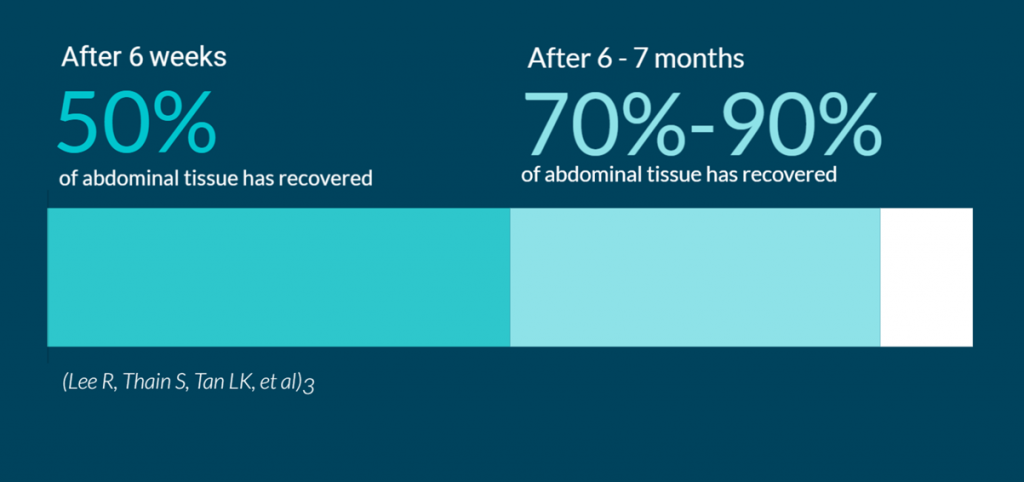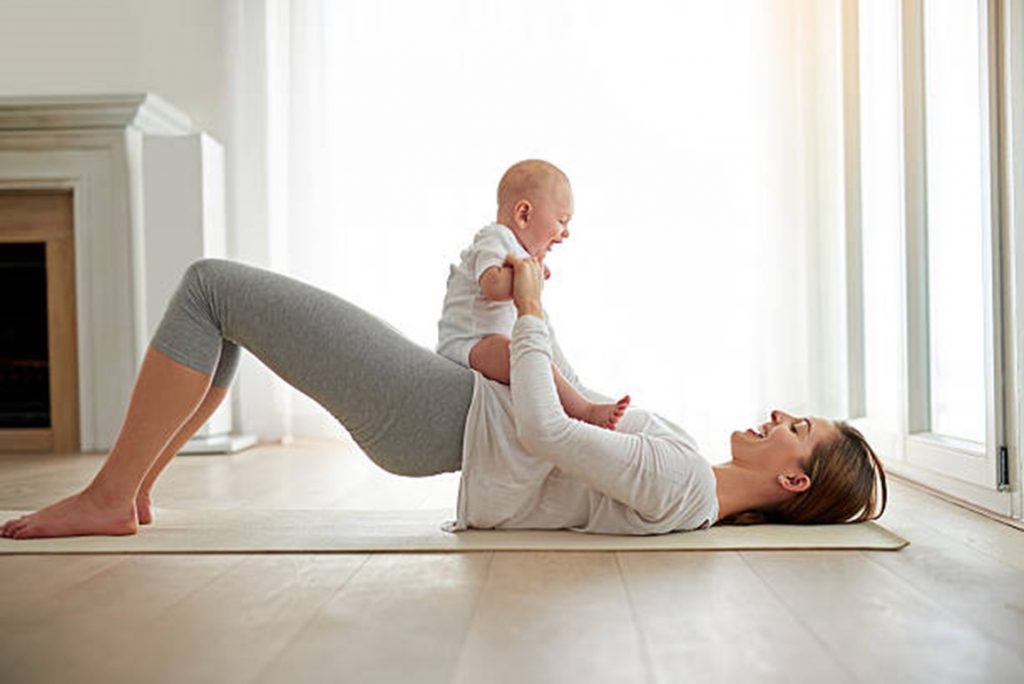As a Physiotherapist and Pilates Practitioner working in Women’s Health one of the areas I thought I would address the most, but I actually treat the least, is women hoping to return to their pre-pregnancy exercise regime.
Following a huge bodily stress such as giving birth, or major surgery like a caesarean section, rehabilitation to return to the ‘pre-injury’ state should be the norm. It concerns me that so many women return to exercise such as running and HITT without even a checkup, because the ramifications this has on their body in both the near, and far future is HUGE.
A recent study in 2021 by Moore et al1 reports that up to 84% of women sustained lower limb injuries upon returning to exercise post-partum!

My aim here is to share some information about this topic, to create more realistic expectations of returning to impact based exercise after giving birth, and hopefully reduce the rate of injury and dysfunction in this group.
What to consider when returning to exercise
When looking to return to exercise following pregnancy we need to consider not just muscle weakness, but also increased fatigue, and reduced exercise tolerance. Initially, most women will not be capable of performing anywhere near their pre-birth level, let alone their pre-pregnancy level, so creating a graduated program that sets you up for success is crucial. The only way we can do this is through assessment, education, and having specific and measurable goals to guide progress. This journey is varied from person to person so relying on arbitrary time frames alone is not helpful.


The earliest recommended time to ‘Return to Running’ (RTR), or impact (jumping, skipping, bouncing etc) is 3 months (Goom T, Donnelly G & Brockwell E)2, provided that there are no contra-indications, and the body is ready.
We need to consider not just the pelvic floor muscles (PFM), but also the abdominals, breast tissue, and joint tissue, as these are all impacted by pregnancy, and pregnancy hormones. PFM recovery is generally optimised at 4-6 months post-partum, abdominal tissue is around 50% recovered at 6 weeks, and between 70-90% recovered around 6-7 months (Lee R, Thain S, Tan LK, et al)3.
Looking solely at average rates of tissue recovery, the majority of our clients are unlikely to be ready before 4 months, so a goal of RTR at 6 months looks more realistic.

Signs you should delay your return to running
Listed below are some absolute contraindications to RTR following birth. These are red flags which require attention in all women, but especially those planning RTR or impact based exercise.
- Vaginal heaviness – this is often a symptom of prolapse
- Having a 3rd trimester prolapse – this is also a major risk factor as this can still be present up to 8 weeks following the birth
- Stress Incontinence – any leakage under load indicates sub optimal pelvic floor function, so adding repetitive load such as jumping will almost certainly lead to worsening of symptoms.
- Poor sleep
- Poor nutrition
- Abdominal muscle separation (RAD, or Rectus Abdominus Diastasis)
- Pelvic girdle pain – ie. Pain in the pelvis, lower back, upper thigh, groin, genital and perineal region
The 6 Phases of Return to Running
(Donnelly GM, et al.)4
1. READY – Pre-natal to early post-partum
- Education about bodily changes during and after pregnancy
- How to choose safe exercise and avoid becoming deconditioned.
- Setting these expectations early will help to smooth out the journey and hopefully reduce disappointment and frustration if the idealised standard set by “Insta-famous” mummy blogger models isn’t achieved in some ridiculously short time frame.
2. REVIEW – approx. 6-8 weeks post-partum (for both vaginal and caesarean deliveries)
- This is where your Physio will assess and start addressing PFM and abdominal muscle concerns – with all injuries, early intervention leads to better outcomes.
- Screening and consideration of old injuries takes place to help with programming the next phase.
3. RESTORE – 2-4 months post-partum
- Find balance for physical and psychological wellbeing.
- Rehabilitation and functional exercises, ‘activity snippets’, and introducing cardio.
- Activity Snippets – even 10 mins at a time for a total of between 20-60 minutes per day will yield results.

4. RECONDITION – from 16 weeks onwards…
- Prepare for the physical demands of running by increasing loads and challenges progressively.
- Include exercises for any sport specific demands.
- Monitor symptoms and adjust load accordingly – THIS DOES NOT MEAN YOU’VE FAILED! We are modifying the program to ensure success. The program isn’t set in stone, it’s flexible to suit the needs and abilities of the individual. There is no magic formula or ‘one size fits all’ approach.
5. RETURN
- Once all goals are met, a graduated return to running (or sport) can commence.
- Structured programs such as the ‘Couch to 5 km’ where you can progress at your own pace are ideal, and proven to work.
6. REFINE AND RE-EVALUATE
- Optimize performance, and be on the look out for any return of symptoms or signs of energy/nutrition deficit.
After giving birth or having a c-section, your body needs time to heal back to it’s ‘pre-injury’ state.
With the help from this 6 step framework and the Infusion Team, your body will be ready for exercise and sports in no time!
Written by Sue Lin Kalish
Senior Physiotherapist
Infusion Pilates and Physiotherapy
- Moore IS, James ML, Brockwell E, Perkins J, Jones A & Donnelly GM. Multidisciplinary, biopsychosocial factors contributing to return to running and stress urinary incontinence in postpartum women. BJSM, 2021
- Goom T, Donelly G, Brockwell E. Returning to running postnatal – guidelines for medical, health and fitness professionals managing this population. Sports Medicine, March 2019
- Lee R, Thain S, Tan LK, et al. Asia-Pacific consensus on physical activity and exercise in pregnancy and the postpartum period. BMJ Open Sport & Exercise Medicine, 2021
- Donnelly GM, et al. Reframing return-to-sport postpartum – the 6 R’s framework. Br J Sportsmed Monthly, 2021 Vol 0 No 0
Edited by


